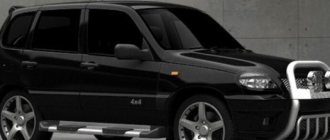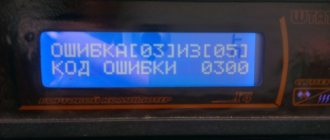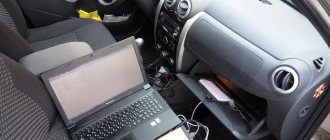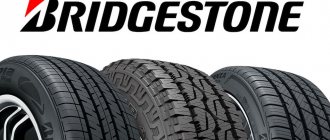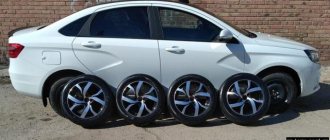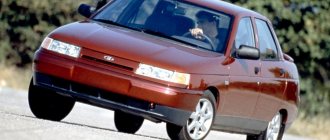Rubber provides traction between the wheels and the road and transfers engine power to the asphalt. It is important to choose the right kit for your car so that the operation of the car is as efficient as possible. Each set has such a parameter as the seasonality of the tires. Next, information will be presented about all-season tires, the features of their markings and the properties of this rubber.
In order to identify all-season tires by marking, such tires have an additional designation in the form of the letters M+S. The abbreviation Mud+Snow means that the kit provides reliable traction in difficult weather conditions. In addition, all-season tires are designated by the symbols 4S, AS or AW (4 Season, All Season or All Weather).
However, it should be understood that, in essence, all-season tires lose to winter tires at low temperatures and lag behind summer tires at high air temperatures. In fact, these tires are considered more of an off-season tire.
What is an all-season tire?
Various sets of seasonal tires are offered for the car, which differ in their characteristics and composition.
Winter tires are made of soft types of rubber, which will prevent the tire from becoming tanned. In addition, such products have a developed tread pattern and a high profile, which allows them to cling to slush and effectively drain water. The difference between summer tires is hard rubber. This tire tolerates high loads well and does not melt while driving, confidently clinging to the surface. The profile height is small, and the contact patch with the road is the most extensive. However, in low-temperature conditions it becomes dull and does not provide proper grip, which results in a long braking distance.
Finding out whether you have summer or winter tires is quite easy. Sets without any additional marks are considered summer. All-season tires are designated by the letters 4S, AS, M+S, and the Velcro or studded tires are marked with snowflake designs.
European type friction tires
Recommendations for choosing winter tires for the Lada Vesta SV Cross
Tires are also called “high-speed” because of their high speed index - from 210 to 300 km/h. They behave confidently on dry and wet asphalt and are primarily intended for regions with warm winters, where snow rarely falls and the roads are immediately cleared.
The European tire is distinguished by a harder rubber compound (which is why it can “slip” in severe frosts), shallow lamellas and the smoothest shoulder area, which provides it with good braking and handling on asphalt. It also works relatively well on snow (but worse than studs or Velcro) and is not at all designed for ice.
For comparison, here are the results from the same test from the Finnish Test World. It presents the difference in braking distance between studded, Velcro and European tires.
The graph shows the difference in the braking distance of a European tire with the best and worst studs and Velcro.
Parameters and characteristics of rubber
Each set has a concept of tire seasonality. Despite the fact that tires of a certain composition are labeled as all-season tires, such a set is demi-season tires. These all-season tires have a softer rubber compound. In the summer, the all-season tire will overheat and “float,” which will lead to premature wear.
In the case of ultra-low temperatures, tires will lose to their winter counterparts. Such kits work most effectively at near-zero levels, providing proper grip on cold asphalt, slush or rain. In such conditions, rubber can be used, but you should not ride on it all year round; you should wear specialized shoes for the winter or summer season.
Review of summer tire manufacturers
Motorists who know how to choose summer tires for a car often get lost in the wide list of manufacturers. Some people like budget options from Nokian Tires, while others will only be satisfied with the elite Yokohama. The rating below contains the TOP 4 best tire manufacturers from different price categories.
Nokian Tires Hakka Green
A summer tire with many innovative qualities. It is perfect for drivers who love safe driving in all weather conditions. The tread pattern resembles the profile of a golf ball in appearance. The rubber mixture contains Finnish pine oil. Thanks to it, road grip improves significantly. In terms of elasticity, tires occupy a leading position compared to other brands.
BFGoodrich Grip
BFGoodrich Grip is a tire with a directional tread pattern. They are intended for passenger cars. Experts, after conducting many tests, claim that these are tires with excellent handling. Large tread blocks help to obtain instant steering response in all driving situations. The tires have an attractive design, cope well with water obstacles on the road, and make virtually no noise.
Toyo Proxes CF2
Proxes SF-2 are manufactured by a Japanese manufacturer for powerful cars. To provide the driver with high levels of comfort, the tires were manufactured using the latest developments in materials and design. The rubber mixture contains a large amount of silicon component and polymers, which makes the rubber even more durable and rigid.
MICHELIN Energy Saver
MICHELIN Energy Saver are produced by a French company. They are known to car enthusiasts from all over the world. The tires are of impeccable quality, comfortable movement without loss of control. The rubber has an asymmetric tread pattern, which improves the maneuverability of the vehicle. The advantages of this model include wear resistance, effective fluid drainage and excellent grip on the road surface. Users note that when driving quickly, they feel unevenness on the road. But compared to the advantages, this disadvantage does not particularly stand out.
If you have not yet decided which summer tires you want to purchase, then you should definitely take into account all the nuances described above and choose the most optimal option for you. Choose a high-quality set of tires - this way they will last you as long as possible and will not cause discomfort.
Pros and cons of operation
Each kit has its pros and cons.
All-season tires are no exception. Advantages:
- allow you to save money by purchasing only one set of wheels;
- feel good at zero temperatures, on wet or snowy asphalt.
Flaws:
- significantly lose to profile tires, subject to seasonality. At high temperatures the tire “floats”, and when the thermometer table is lowered, it becomes tanned. In winter the car must be on winter tires, and in summer - on summer tires.
Features of all-season tires
The car market responds quite quickly to the needs of car enthusiasts. That is why the concept of universal all-season tires that are suitable for any season was developed. The result is a symbiosis of summer and winter tires, which has the characteristics of both types. However, it was still not possible to realize all the advantages without the disadvantages.
It is possible to better understand the specifics of all-season tires only after some analysis of seasonal tires.
- To make the summer version, hard rubber is used. Low, wide tread with different types of patterns prevents premature tire wear and provides the necessary coefficient of rubber adhesion to the road surface. A high tread will significantly increase the mass, and therefore reduce the contact area. It is recommended to use this type of rubber at temperatures not lower than +7 °C. Otherwise, the material becomes more rigid, wear increases, and the risk of tire damage and accidents increases.
- Winter tires are made from softer rubber. The softness of the material provides better grip on wet or slippery surfaces. The soft elastic material tolerates low temperatures well and does not harden. On winter tires, tread patterns are applied more deeply, and Velcro is also applied - a small zigzag tread pattern - or studs (read about which is better - studs or Velcro). In warm weather, using winter tires makes driving difficult, increases fuel consumption, and the tire wears out faster.
- All-season tires are made of medium-hard elastic rubber. In terms of hardness, this type of rubber occupies an intermediate position between soft winter and hard summer. The tread is relatively low, the pattern is applied wider and deeper than the summer one, but not as deep as the winter one. The number of spines has been reduced and they are much smaller in size. The size of the Velcro is also reduced, they have light adhesive properties. The optimal temperature range for such tires is from +5 to -10°C. Use in other temperature conditions reduces the performance of the tires.
You might also be interested in this article where our expert talks about how to select and install tracks for a passenger car.
Tire size
The tire size is also indicated on the sidewall of the tire. There is a European type of marking. For example, readings 205*35*R17 make it clear that the tire width is 205 mm, the profile height is 45, and the inner diameter is 17 inches. The letter r means that we are looking at shoes with radial cord weaving.
The American method is similar to the European one, only in front of the numbers there are additional letters that signal the “orientation” of the rubber (P – Passanger, LT – Light Track). There is another way to indicate the standard size, where the values are given in inches. For example, if there is a number 29*11*R18 on the side, its decoding will mean the following:
- 29 – outer diameter in inches;
- 11 – tire width;
- 18 – internal diameter.
Speed index
Another required parameter is the speed index. This is a letter designation that indicates that the car can move at a given speed for several hours. The closer the letter is to the end of the Latin alphabet, the higher this indicator. Now the most common are kits with the indexes S, T, U, HV or W, allowing speeds of 180-190-200-210-240 or 260 km/h, respectively.
Load index
Along with the speed category, tire manufacturers put down two more numbers - the maximum load index. This parameter means that the tire is capable of traveling under the specified weight on one wheel, subject to maximum pressure. The indicator is indicated in kilopascals closer to the inner radius.
The higher the indicator, the greater the load that the wheel can carry. The minimum value in the industry is 1 - 46.2 kg per wheel, and the maximum figure is 279 - 13.6 tons per cylinder.
Summer tires and winter tires
Tires are designed to perform under specific conditions, both in terms of weather and the vehicles with which they are homologated. One product is designed for city cars and another for sports cars or trucks. However, what is important is that each tire must provide the driver with safety, since it is the only element that connects the car with the road. For this reason, differences in seasonal patterns can be seen in three areas:
- applied mixture
- tread pattern
- performance .
Marking
Sometimes the marking of all-season tires can be supplemented with various icons. Among the additional symbols you can find the inscription “Retread”. The fact is that some kits need to be repaired and the compound is re-fused onto them and the tread is cut. Refurbished products carry this designation. Driving on such tires does not pose any danger, but the tire purchased by the driver will wear out a little earlier. Fortunately, the price is cheaper.
Some car tires and wheels do not fit together, having fundamental differences in design. So, if you are going to change the tires of your car yourself, it is worth remembering that the tube sets must be installed on the corresponding wheels with the designations LK, GK or RK. The symbols LB, GB or RB indicate combination with tubeless type kits (TubeLess).
Tire installation rules regulate the presence of color marks. If there is a yellow triangle icon on the sidewall, then this is the lightest part of the rubber. All you need to do is align it with the mark on the disc. The red dot indicates the hardest point and should also be aligned with the L mark on alloy wheels.
Selection for SUV or crossover
We told you how to distinguish winter tires from summer tires - by the snowflake icon. However, to choose shoes for a non-trivial car, this knowledge may not be enough. When purchasing wheels for a crossover, you should imagine where the car will spend most of its time. If in the city, then standard tires with the designation AW (All Weather or Aqua - improved drainage and increased resistance to aquaplaning) are a good choice.
If the car goes beyond the definition of an SUV and you are planning trips into nature, then it is better to give preference to sets with a developed tire tread, improved lugs and increased cross-country ability. Such kits are designated by the letters AT - All Terrain.
For real off-road vehicles, special tires like Bridgestone Dueler are used, which have proven themselves in combat conditions and have high load resistance and excellent grip. This set is more expensive than the standard one, but its price is justified by its excellent qualities.
